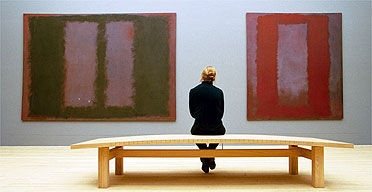
Although Susanna Centlivre wrote The Basset Table...I mean...The Gaming Table long before our era begins in EN 230, I'd like to post a quick review of the performance my husband and I saw today at the Folger Theater in DC.
One of the advantages of living near DC is the ability to see performances of plays that are no longer performed as often. The Folger Theater is a particularly suitable venue. The two-story stage with its sweeping, wooden staircase represented an eighteenth-century London mansion in a way that a more typical stage might not.

This performance reminded me that Restoration comedy is fun to read--and watch. The performance was fun and funny without being condescending or condescended to. Neither did it creak. The actors were skillful, and parts of the play were discreetly updated here and there. Since we associate basset with dogs rather than with cards, the play's title became The Gaming Table. After all, the play is about women who gamble on cards, love, and men. The prologue and epilogue included references to Congress and women's roles today.
Like many Restoration comedies, The Gaming Table brings together several couples in a merry round of romance. Centlivre gives us four to be exact. First is Lady Reveller, a spunky widow, and her beau Worthy, who wants her to give up gambling. Next is her cousin Lady Lucy, a serious young lady who prefers the playhouse to the gaming table, and Sir James Courtly, a not-so-serious man. Another cousin, Valeria, would seem to prefer science to love...except that she is in love with the charming Ensign Lovely. And then there are Mr. and Mrs. Sago, Pud and Kiki...except that she appears to love gaming and Sir James more than she loves her husband. Other characters throw in complications. Valeria's father intends for her to marry Captain Hearty who would rather not marry her. And then there are Buckle and Alpiew, the servants of Worthy and Lady Reveller respectively.
But all's well in the end.
Here are links to a few reviews of The Gaming Table:
For more information about the play itself, see The Folger Theater's website:
For more information about Susanna Centlivre who wrote The Basset Table in 1705, see these links:
See these links for a review of an earlier revival of The Basset Table:
UMBC has a podcast of a performance:
Chicago's Alcyone Festival in 2008 included a performance of another of Centlivre's plays:
The Busy Body was staged in NYC in 2010:
The blog entry above has many pictures!
The Wonder was also staged in NYC. This appears to be a more modern version.
_poster.jpg/200px-Angels_in_America,_Millennium_Approaches_(1993)_poster.jpg) And what a lot of links there are!
And what a lot of links there are! The individual scenes we looked at are below.
The individual scenes we looked at are below. 


 My husband and I have also been attending performances of contemporary drama. Last weekend we saw Red at Arena Stage, another impressive venue. This venue, however, is quite 21st century.
My husband and I have also been attending performances of contemporary drama. Last weekend we saw Red at Arena Stage, another impressive venue. This venue, however, is quite 21st century.









 You may know Langston Hughes (1902-1967) as a poet, the author of "The Negro Speaks of Rivers," "I, Too, Sing of America," and "Theme for English B." These poems are quite famous. (Below is a link to Hughes reading "The Negro Speaks of Rivers," a poem that he wrote when he was seventeen!)
You may know Langston Hughes (1902-1967) as a poet, the author of "The Negro Speaks of Rivers," "I, Too, Sing of America," and "Theme for English B." These poems are quite famous. (Below is a link to Hughes reading "The Negro Speaks of Rivers," a poem that he wrote when he was seventeen!)

